When planting new grass seed, it’s important to water it regularly for optimal growth. How often you water your new grass seed will depend on a few factors, including the type of grass seed, the climate, and the soil type. In this blog post, we’ll discuss how to water new grass seeds so that you get the best results.
Before starting, it’s important to know that different grasses have different watering needs. For example, Bermuda grass and zoysia grass need less water than bluegrass and fescue. If you’re unsure what type of grass you have, consult a professional or do some research to find out.
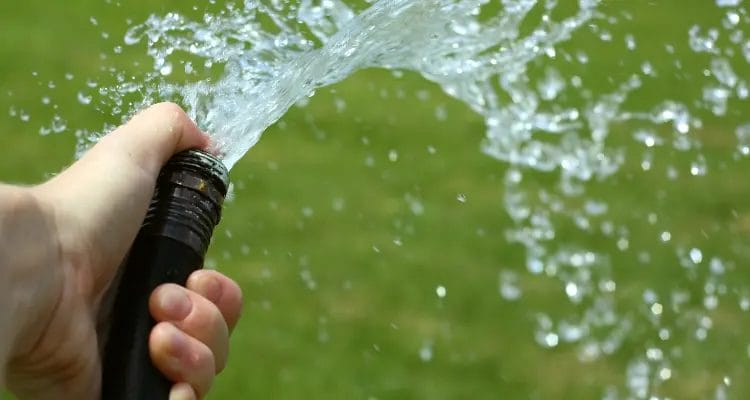
How to Water New Grass Seed
Newly planted grass seed needs just the right amount of water to germinate and grow into a healthy, lush lawn. Here are some tips on how to water new grass seeds for optimal growth:
1. Set automatic timers for five to ten-minute intervals during the day. This will ensure even watering without requiring you to remember to do them yourself.
2. Water newly planted grass seed thoroughly, making sure the soil is moist down to the roots. You may need to water multiple times daily, especially during hot weather.
3. Avoid over-watering, as this can cause the seeds to rot. Instead, check the soil regularly to see if it’s still damp; if it is, you don’t need to water it again.
Important Tips: If you water with a hose, you actually put quite a bit of water down on a very localized area. But if you use a sprinkler nozzle, you can actually water a much larger area with the same amount of water. How long you should water new grass seed also depends on the nozzle type. If you’re using a fan nozzle, it will take less time than if you’re using a spray nozzle.
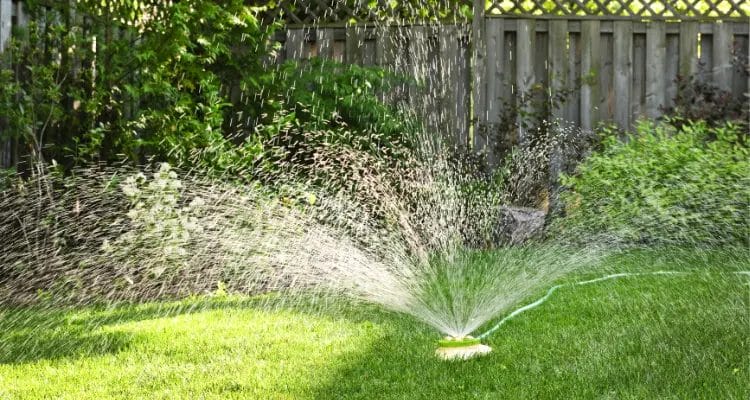
How long should you water new grass seed?
As you know, hydration is key to keeping your lawn looking lush and green. But over-watering can be just as damaging as not watering at all. So, how do you strike the right balance?
When watering new grass seed, the general rule of thumb is to water for ten minutes twice a day (once in the morning and once in the evening). Note that this may vary depending on your climate and the type of grass you’re planting. For example, in hot or dry climates, you may need to water for longer periods or more frequently.
Of course, it’s always best to check with your local nursery or gardening center for specific recommendations. For example, they can advise you on how often to water new grass seed based on your situation.

How wet does new grass seed need to be?
When watering new grass seed, you want the soil to be moist but not soggy. So how do you know if you’ve watered long enough?
A good rule of thumb is to water until the top inch of the soil is damp. To check, stick your finger in the soil; if it feels dry more than an inch down, keep watering. You’ve gone too far if it feels wet or mushy and should stop.
Over-watering can cause the grass seeds to rot, so it’s important to get this right. Following these guidelines ensures that your new grass seed has the best chance of germinating and growing into a healthy lawn.

What type of grass seed is best to use?
When it comes to grass seed, there are a lot of different options out there. But turf-type fescue is the way to go if you’re looking for the best possible option.
Turf-type fescue is a type of grass part of the bigger turfgrass family. It’s known for withstanding heavy foot traffic and thriving in hot and cold climates. In addition, it has a deep root system that helps it resist drought and pests. These qualities make turf-type fescue an ideal choice for home and commercial use.
Whether you’re seeding a new lawn or repairing patches in an existing one, turf-type fescue is the best way to ensure a healthy, lush lawn that will last for years.
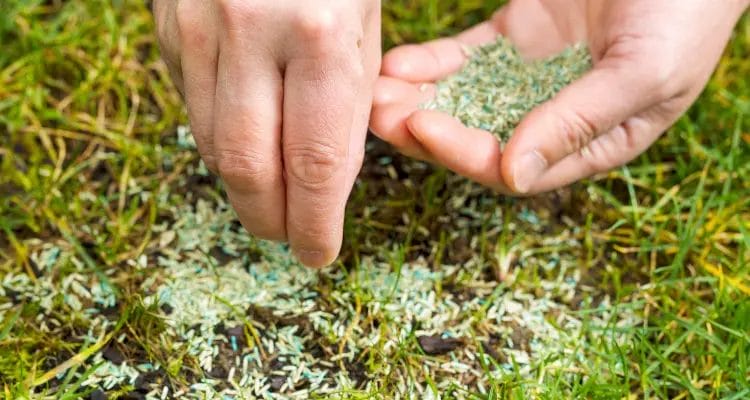
How to care for new grass seedlings?
Once your new grass seed has germinated and begun to grow, it’s important to give it the right care so it can continue to thrive. Here are some tips:
-Dealy watering when dry periods.
– Fertilize regularly. New grass needs lots of nutrients to grow strong and healthy. Use a fertilizer made specifically for new lawns, and follow the directions on the package.
– Mow when needed. How often you need to mow depends on how fast your grass grows. Generally speaking, you should wait until the grass is about four inches tall before mowing for the first time. After that, aim to mow every week or two.
– Water deeply and less frequently. Deep watering encourages deep roots, which results in a healthier lawn. Watering less often also helps to prevent fungal diseases.
Following these simple tips ensures that your new grass stays healthy and grows for years.
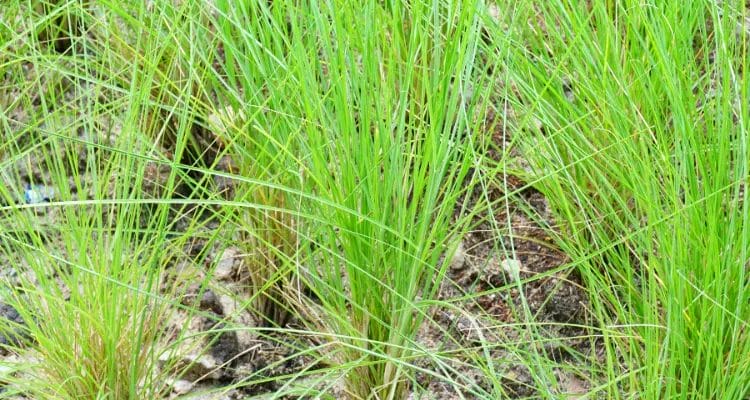
How long does it take for a new grass seed to germinate?
It takes seven to 10-14 days for new grass seeds to germinate. The exact time frame depends on the type of grass, the temperature, and the amount of moisture in the soil.
Once the grass seed has germinated, it’s important to continue following the tips in this article to ensure that it grows into a healthy lawn. With a little TLC, your new grass will be the envy of the neighborhood in no time.
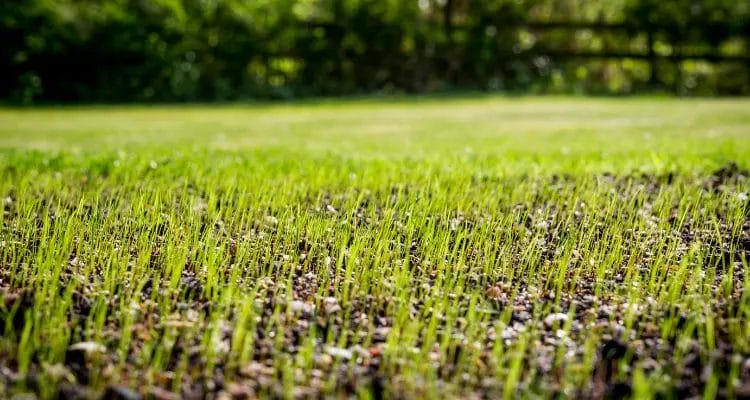
How should you rake new grass seed?
After you’ve sown your new grass seed, it’s important to rake it gently so that it’s evenly distributed. You don’t want any clumps of seeds, as this can lead to uneven growth.
Raking also helps to create good contact between the soil and the seeds, which is essential for germination. Use a lightweight rake or hoe to avoid damaging delicate grass seedlings.
These simple tips will help you get the best results from your new grass seed. With patience and care, you’ll have a beautiful, healthy lawn.

What are the common problems with new grass seeds?
Here are some common problems with new grass seeds:
First, the grass seed wasn’t raked evenly, and now there are clumps of grass.
This can lead to uneven growth and bare patches in your lawn. To avoid this, gently rake the grass seed, so it’s evenly distributed.
If you end up with clumps of grass, you can try breaking them up with a hoe or rake. However, carefully sowing seeds is best to avoid this problem altogether.
Some other common problems are:
-The grass seed didn’t get enough water, and now it’s dying.
-The grass seed got too much water and is now rotting.
-There was a drought, and the new grass isn’t growing.
-Wrong temperature for seeding.
-Birds ate the grass seed.
-Insects ate the grass seed.
-The grass seed got washed away by rain or flooding.
-Not enough sunlight.
-Too much shade.
-The grass seed was stolen.
-The grass seed was planted too deep.
-The grass seed was planted in the wrong place.
These problems can be easily avoided by following the tips in this article. Then, you’ll have no trouble getting your new grass to grow with a little care and attention.
How do we fix common problems with new grass seeds?
If the grass seed wasn’t raked evenly, you could try to break up the clumps with a hoe or rake. However, carefully sowing seeds is best to avoid this problem altogether.
If the grass seed doesn’t get enough water, water it deeply and less frequently. Deep watering encourages deep roots, which results in a healthier lawn.
If the grass seed got too much water and is now rotting, make sure to drain in the area and only water when necessary.
There was a drought, and the new grass isn’t growing; you can try to rake the area to loosen any compacted soil lightly.
Birds ate the grass seed. You can try putting a net over the area to keep the birds away.
Insects ate the grass seed. You can try using an insecticide to get rid of the pests.
The grass seed got washed away by rain or flooding, and you can try to replant the seeds in a different location.
You can try to move the area to a sunnier spot without enough sunlight.
You may want to consider planting shade-tolerant grass species with too much shade.
The grass seed was stolen. You can try to plant the seeds in a more hidden location.
The grass seed was planted too deep. You can try lightly raking the area, so the seeds are closer to the surface.
The grass seed was planted in the wrong place; you can try to replant the seeds in a different location.
Frequently Asked Questions:
Is it OK to water new grass once a day?
What happens if you plant too much grass seed?
When can you walk on the new grass?
Should grass seed be covered?
How soon can you cut new grass seed?
Conclusion
Now that you know how to water new seeds, make your lawn greener than ever. With the right amount of care and attention, getting a good yield from your new grass seed is possible. Just remember not to overdo the watering and fertilizing too often. If you follow all these simple steps, then there is no doubt that your newly-installed turf will flourish for years to come.






